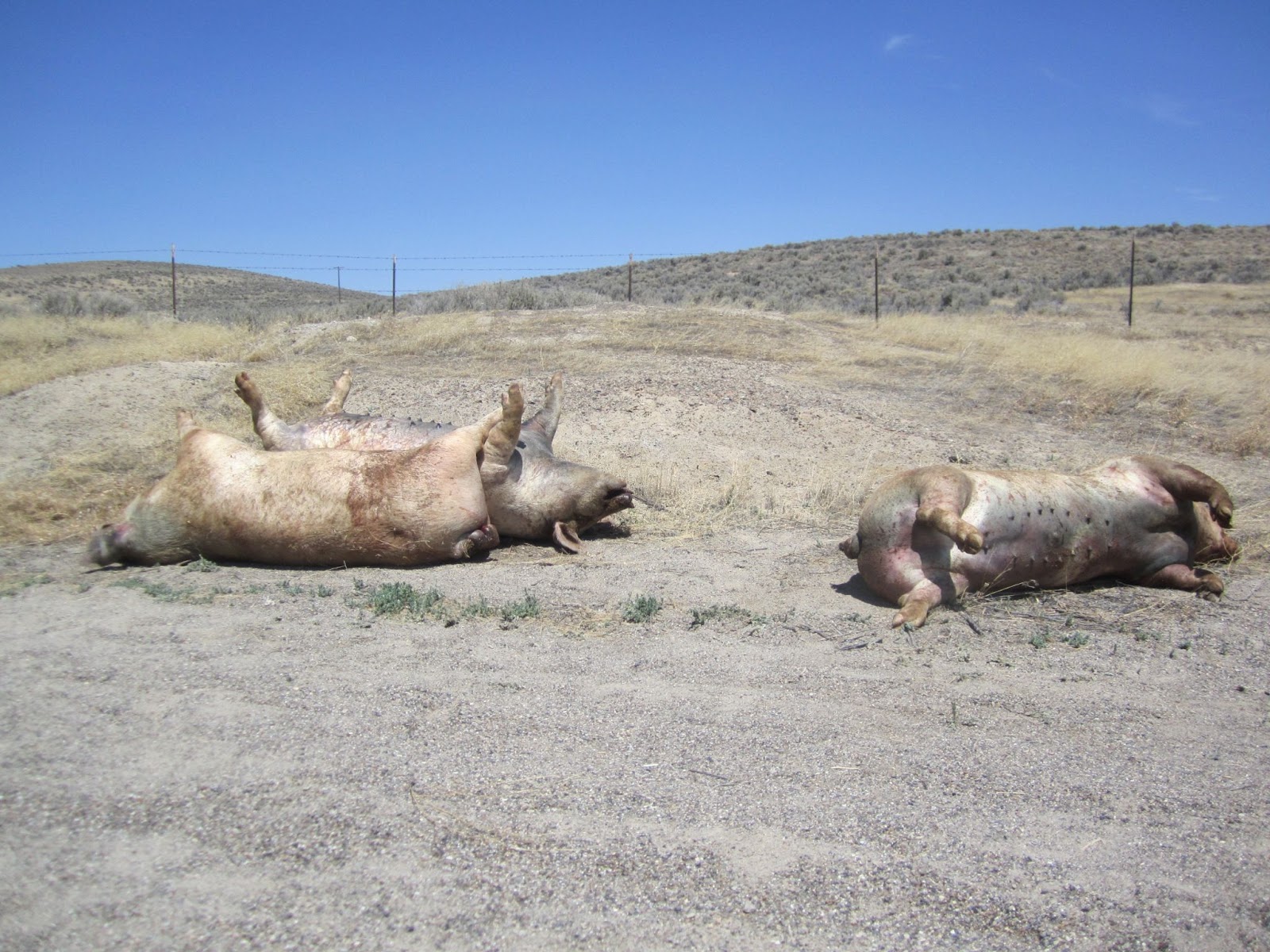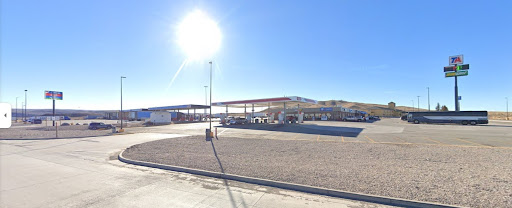Animal Transport: Torture Hidden in Plain Sight
In late August 2021, Animal Outlook investigators followed a truck belonging to Isaacson Truck Line, Inc. for approximately 32 hours, documenting its journey of more than 1,200 miles from Nebraska to California with a trailer full of pigs. During this time, the pigs were never let out of the truck and were exposed to the summer heat the entire time.
Transport is known to be stressful and dangerous for animals. It is difficult for animals to regulate their body temperatures under stress in overcrowded, poorly ventilated transport vehicles. In addition to overcrowding, loud noises, motion sickness, and dehydration put an extraordinary amount of mental and physical stress on the animals. In high temperatures, exhaustion, dehydration, heat stress, cardiac arrest and sudden death are common.
The Twenty-Eight Hour Law prohibits transporting animals for more than 28 consecutive hours without unloading them for at least five hours of rest and providing water and food. Although it is clearly illegal under federal law, gruelingly long transport with no opportunities for rest, food or water is a commonplace reality for farmed animals because the law is woefully under-enforced. We’re calling on the USDA and the Department of Justice to enforce this law on the basis of our investigation and wherever violations occur. And the law is in need of reform – our country lags behind in protecting animals in transport – such as the EU, where animals must be allowed to rest and given food and water every eight hours.
Our investigations in 2005 and 2012, along with this one, uncovered and documented what we allege to be violations of this federal law. Shockingly, in our 2012 investigation, we also documented dead pigs dumped on the side of the road after they died on the transport truck. When pigs die during transport, the driver may dump them or leave them in with the live pigs for the remainder of the journey.

Nearly 726,000 pigs and 29,000 cows die in transport every year – just in the U.S. Yet there were only 11 investigations into potential violations in a recent 12-year period.
Prior to our 2005 investigation, the USDA had refused to enforce the law when animals were transported by truck. After our investigation, we and our coalition partners submitted a petition to the USDA to apply the law to trucks. The USDA then reversed its policy and acknowledged that the law applies to trucks, yet enforcement remains rare.
Below is our investigators’ account of the harrowing journey during our 2021 investigation.
Monday, August 23, 2021
It was around 3PM CT. I had my phone plugged in at a rest stop in Dawson County, NE when a livestock truck passed by going west on the highway. The trailer had only small holes in the sides and the truck’s speed made it hard to discern if there were animals in the trailer. For a split second I thought I saw a flash of pink as the truck passed, so I hurriedly gathered my belongings and ran back to the car where another investigator was waiting. They hadn’t seen anything to indicate the presence of pigs in the trailer, but we decided to confirm for ourselves.
We went off after the truck. After catching up, we peered through the holes in the back of the metal trailer. We could see pink flesh through the holes.

We alerted our colleague who was waiting in another vehicle at a different location. The other vehicle caught up with us and together, we followed the truck on its long journey across the country. It was a hot day, with temperatures reaching up to 91F as we traveled through Nebraska.
According to a 2019 article in Frontiers in Veterinary Science, “the risk of death for market-weight pigs during transport can be 1.4 times higher at temperatures between 29 and 33 degrees C [84.2 and 91 degrees F] than in a temperature range of 12-26 degrees C [53.6-78.8 degrees F]. The article goes on to say that "extreme environmental temperatures during transit are generally considered to be one of the greatest contributors to transport losses in terms of pigs dying. Pigs do not sweat; therefore, they are limited in their ability to thermoregulate in hot environments and are sensitive to heat stress."

After an hour and a half, the truck entered Wyoming and continued on the highway until 9:27 PM Mountain Time, when it pulled over across from a travel center.
According to an article by the Manitoba government, “pigs travelling more than 4 hours prefer to lie down and will compete for floor space… Fighting for floor space and panting both increase body heat and may increase problems of confinement in summer transport.”

We took turns trying to sleep in our cars as we kept tabs on the truck throughout the night. At one point, we heard the pigs, crammed together in the back of the trailer, screaming, and drove past the truck to document the sound.
Tuesday, August 24, 2021
The truck started up again at 7:40 AM Mountain Time and continued in the same direction on the highway. We were still following the truck as it passed into Utah about three hours later.

A 2010 study found that “pigs travelled for 8 and 16 [hours] presented acidosis, hypocapnia, hypoxemia, hypernatremia, hypercalcemia, higher than normal glucose and increased lactacidemia and hematocrit levels.”
The truck made multiple stops at gas stations and rest stops, but nothing for more than a few minutes each time. Still, every stop was a relief for us, as it gave us time to switch driving duties, take a short break, and pick up more snacks and energy drinks.
The truck would also stop at Ports of Entry as we crossed state lines. One of these was near West Wendover as we crossed from Utah into Nevada shortly after 1 PM Pacific Time.

These stops were particularly nerve wracking for us, as we were terrified of losing the truck and not being able to document the reality for these animals and get evidence of legal violations. Luckily, that didn’t happen.
At 7:47 PM Pacific Time, the truck passed into California.
About 30 minutes later, the truck suddenly pulled off to the shoulder of a freeway exit. At this point, we had been following the truck for about 32 hours. At no point in this journey had the pigs been let out of the truck for rest, food or water.
The Truth About Transport
This kind of grueling transport is commonplace for farmed animals, although it is clearly illegal. So why is it allowed to continue? The language of the law is clear. Once the government learns of a violation, it must enforce the law. But consistently, over and over, they fail to do so. That's why we've asked the Department of Justice to enforce the law.
The Twenty-Eight Hour Law has the potential to improve animal welfare if actually enforced. However, the best way to ensure animals are spared from the torment of long distance transport is simply by choosing vegan meals.
Your support helps shine a spotlight on the horrors of animal farming. Please donate today to help continue to expose this cruelty.
Press
- March 25, 2022 - One Green Planet: Shocking Investigation Reveals Tightly Packed Live Pigs Being Transported 30 Hours Without Food, Drink or Breaks
- March 24, 2022 - Lady FreeThinker: Pigs Trucked More Than 1,200 Miles Over 30+ Hours In Extreme Heat, Investigation Shows
- March 21, 2022 - The Mark Thompson Show: Mark Thompson: Dangers of Animal Transport to Slaughterhouses
- March 21, 2022 - Sentient Media: Investigators Followed a Livestock Truck for 32 Hours. Here’s What They Found.
- June 15, 2022 - The Guardian: More than 20 million farm animals die on way to abattoir in US every year
- June 15, 2022- NatureWorldNews.com: Over 20 Million Farm Animals in US Die Before Reaching Slaughterhouse Due to Horrific Conditions
- June 20, 2022 - One Green Planet: Over 20 Million Farm Animals Die on Their Way to the Slaughterhouse in the United States Every Year
- July 1, 2022 - Sentient Media: Slaughterhouses: The Harsh Reality of How Meat Is Made
